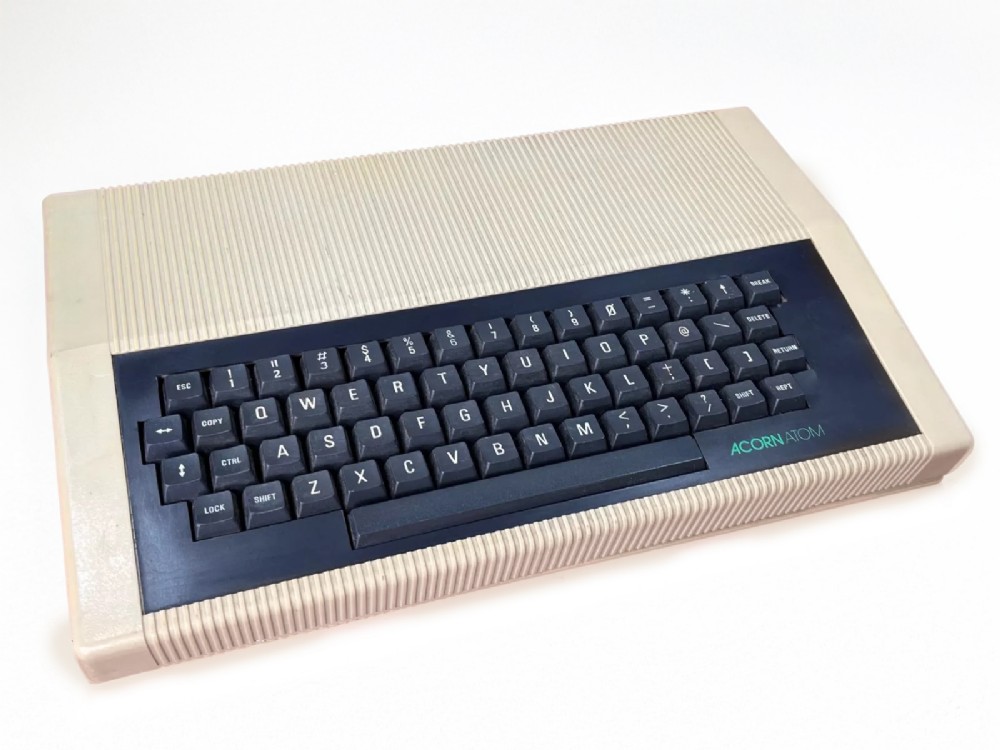
Released in 1980 by Acorn Computers Ltd., the Acorn Atom was a low-cost home computer kit (or assembled unit) designed to appeal to hobbyists and early adopters. Based on the MOS Technology 6502 CPU, it came with 2KB to 12KB of RAM, expandable up to 32KB. It featured an integrated keyboard, BASIC interpreter, and TV output. Though modest compared to later Acorn machines, the Atom’s design and success paved the way for the legendary BBC Micro. It was particularly strong in educational and scientific circles, offering surprisingly powerful integer and floating-point BASIC capabilities for its price.
| Technical Information | |
|---|---|
| Name | Atom |
| Manufacturer | Acorn Computers |
| Launched | Friday, February 1, 1980 |
| Discontinued | 2/1/1982 |
| Country | United Kingdom |
| CPU | 6502 |
| Power | Internal linear PSU (via transformer plug) |
| Expansion | Edge connector for RAM, floppy disk interface, additional ROMs |
| Storage | Cassette tape (audio port for data saving/loading) |
| Keyboard | 62-key QWERTY keyboard (mechanical keys) |
| Sound | Single channel beeper |
| Graphics | Text modes (32×16 or 64×16), limited graphics modes |
| Display | TV output – up to 256×192 pixels (with expansion) |
| ROM | 8 KB (BASIC interpreter, OS routines) |
| RAM | 2 KB standard (expandable to 12 KB or 32 KB with upgrades) |
The Joystick Port - The virtual museum of Vintage & Retro computers, peripherals, advertising, software and more.